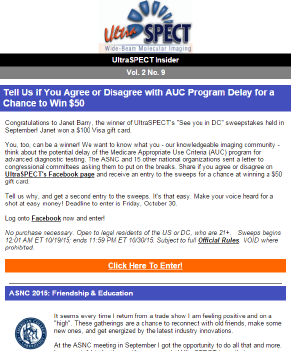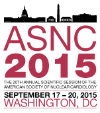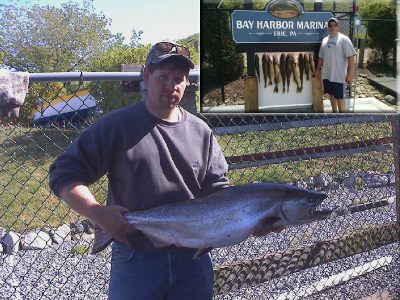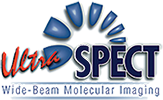 Win a $50 Gift Card When You Enter Sweeps on Facebook
Win a $50 Gift Card When You Enter Sweeps on Facebook
Tell Us if You Agree or Disagree with AUC Program Delay for a Chance to Win $50
Congratulations to Janet Barry, the winner of UltraSPECT’s "See you in DC" sweepstakes held in September! Janet won a $100 Visa gift card.
You, too, can be a winner! We want to know what you – our knowledgeable imaging community – think about the potential delay of the Medicare Appropriate Use Criteria (AUC) program for advanced diagnostic testing. The ASNC and 15 other national organizations sent a letter to congressional committees asking them to put on the breaks. Share if you agree or disagree on UltraSPECT’s Facebook page and receive an entry to the sweeps for a chance at winning a $50 gift card.
Tell us why, and get a second entry to the sweeps. It’s that easy. Make your voice heard for a shot at easy money! Deadline to enter is Friday, October 30.
Log onto Facebook now and enter!
No purchase necessary. Open to legal residents of the US or DC, who are 21+. Sweeps begins 12:01 AM ET 10/19/15; ends 11:59 PM ET 10/30/15. Subject to full Official Rules. VOID where prohibited.
ASNC 2015: Friendship & Education
 It seems every time I return from a trade show I am feeling positive and on a “high”. These gatherings are a chance to reconnect with old friends, make some new ones, and get energized by the latest industry innovations.
It seems every time I return from a trade show I am feeling positive and on a “high”. These gatherings are a chance to reconnect with old friends, make some new ones, and get energized by the latest industry innovations.
At the ASNC meeting in September I got the opportunity to do all that and more. I was grateful to be there with our expanded UltraSPECT team that now includes Scott Truman, our new sales manager (see below for our Q&A to get to know more about Scott). We also welcomed Regina Druz, MD. One of our first customers and an esteemed researcher, Regina is now consulting with UltraSPECT, and it is truly my privilege to be working closely with her.
When it came to education and innovation at the conference, I noted with interest what the new president of ASNC, Dr. David Wolinsky, said in his welcome letter:
"This year's program will allow physicians and technologists to refine their diagnostic and technical acumen and to focus on patient centered imaging, choosing the right test for the right patient and affording the lowest radiation dose possible".
To me, thus, the question is then how you can do so with your current equipment? And the answer was given during some of the conference’s scientific sessions.
Moderated by Stephen A. Bloom, MD, FASNC and R. Glenn Wells, PhD., the session “I Have an Old SPECT Camera and Want an Upgrade: What Are My Options and Where Will I Get the Most for My Money?” featured a host of tremendous, respected faculty.
Dr. Gordon DePuey, past President of ASNC, discussed all available hardware and software upgrades of old SPECT cameras, which included products from GE, Siemens, Philips and UltraSPECT. At the same session, Dr. Stephen Bloom discussed the routine use of ultra-low-dose imaging for young women using quarter-dose imaging and prone imaging. If you didn’t get the chance to attend during ASNC, I highly suggest you access it from the ASNC On Demand offering. For more on quarter-dose and prone imaging, see below an excerpt from Dr. Bloom to learn more.
Based on their presentations, you will understand my sense of elation leaving ASNC, as I concluded from their talks (and hope you will agree) that UltraSPECT is the
- - most cost-effective solution
- - only quarter-time or quarter-dose solution
- - only software solution with backward connectivity
- - only software solution with compatibility to all cameras and workstations in the market regardless the vendor type
Friendship and education. It’s why I put so much into my work, and why I value the time spent at the ASNC conference. I am looking forward to hearing from you about your experiences at ASNC and in general what keeps you feeling positive about the work you do.
I hope to see you all next year at the SNMMI in San Diego.
Best,
Yossi
UltraSPECT Community – Let Us Be Friends!
 Are you part of UltraSPECT Facebook community? If you haven’t yet joined us there, please do, and keep an eye out for a mix of fun and focused discussions, and don’t miss our ongoing series of sweepstakes.
Are you part of UltraSPECT Facebook community? If you haven’t yet joined us there, please do, and keep an eye out for a mix of fun and focused discussions, and don’t miss our ongoing series of sweepstakes.
Did You Know? Dr. Bloom on Prone Imaging
Prone imaging of cardiac patients as a supplement to supine imaging is a highly desirable protocol, particularly in instances where SPECT/CT is not being used, according to Stephen A. Bloom, MD, of Midwest Heart & Vascular Specialists, Overland Park, Kansas.
When imaging occurs in the prone position, attenuation artifacts—such as those of the breast anteriorly or the diaphragm inferiority—often will normalize and become easier to interpret correctly. For clinicians, this facilitates the process of distinguishing between normal and abnormal findings. Of equal value is using a stress-only, quarter- to half-dose protocol with supine and prone imaging in patients with atrial fibrillation, syncope or a low to intermediate risk of coronary disease, as well as for those patients who have not suffered myocardial infarction, but have an implanted cardiac stent.
In addition to increased safety, flexibility is the benefit of administering a lower radiopharmaceutical dose to these patients: If the results are unclear, the patient can return for a follow-up study in three hours or be scheduled for a repeat test the following day, again at a lower dose. Xpress Cardiac serves as a valuable tool for both protocols. Moreover, Xpress Cardiac significantly speeds up the process of adding the prone piece to supine imaging (four-minute nongated process), resulting in a more comfortable experience for patients.
Six Questions With Scott Truman
Q: How did you get into Nuclear Medicine and what has sustained your interest in it?
A: I entered the Nuclear Medicine field in 1994 after graduating from the Nuclear Medicine Institute at the University of Findlay in Findlay, Ohio. I have always been intrigued by molecular functional imaging specializing in Nuclear Cardiology. I have watched the advances and setbacks over the years and have been lucky enough to use my profession to help people overcome many unfortunate conditions, including an overwhelming number with coronary artery disease.
Q: You’ve been working with UltraSPECT for 6 months now. What are your impressions? What has stood out for you most?
A: Seeing the advances that have been made with imaging technologies over the last 10 years has given me a renewed hope that Nuclear Medicine imaging will be around for years to come. UltraSPECT has taken a largely stagnant but effective imaging modality and given it a chance to progress forward again within all imaging centers, not just large facilities that can afford expensive new equipment, but also in small town practices that help local outpatients. UltraSPECT is something that I've seen in action and that I trust and endorse.
Q: How did the ASNC meeting go for UltraSPECT? What were your personal impressions?
A: ASNC 2015 was a good start for me to be exposed to Nuclear Medicine/Cardiology sales and the UltraSPECT community. It gave me a chance to finally meet most of the people that I had been talking to over the phone for the last six months and the information presented in the meeting was very useful, particularly as a lot was geared toward safer imaging!
Q: Where do you see the Nuclear Medicine industry heading to in the near future?
A: Nuclear medicine has historically been slow to evolve. UltraSPECT has sparked a trend of faster, safer imaging throughout the gamma camera manufacturing community and it will be interesting to see how far this trend will go over the next 10 years.
Q: Do you have a story to share from your work experience that is either funny or somehow out of the ordinary?
A: The best story I have actually involves the first applications training I taught in a hospital in Michigan. The UltraSPECT unit was installed and I showed up first thing in the morning. As I came into the room, three technologists were trying to convince an in-patient they had already injected with a full resting dose of Sestamibi to stay still on the table while scanning. She could not handle the 20 minute scan time and the uncomfortable position she had to be in and was adamantly refusing to finish the MPI study.
I stood with the department manager and suggested we ask her if we could scan her at a quarter time, which would cut her time on the camera down to about 4-5 minutes. Since she was refusing the test anyway, we figured we could at least get something out of the study. The patient agreed to that time and the images were wonderful! We saved the day and the patient's study was read successfully. The department's first use of the UltraSPECT unit and Xpress3 was a situation where the study would not have been done and they were able to get a quality study instead! I was already a huge fan of UltraSPECT but, even so, that was impressive to me! UltraSPECT saved the day!
Q: What do you enjoy doing when you are not working?
A: I have been working in the Nuclear Medicine profession for over 20 years as a technologist, manager, and Radiation Safety Officer. I have come to a point in my life where I love what I do, like helping patients live longer lives, training technologists how to use new equipment, and passing on my knowledge of the technology that I practice to new technologists and established departments willing to hear my experience. However, when I'm not working in my profession, I love to hunt and fish in and around the Great Lakes region. Specifically, fishing is my passion! Hunting in the fall allows me to enjoy the beautiful outdoors in the Hills of Pennsylvania and Ohio and helps keep me from becoming depressed as I am forced to put my boat away for the long winter months waiting for spring to arrive and salmon fishing in Lake Ontario to begin in May!

